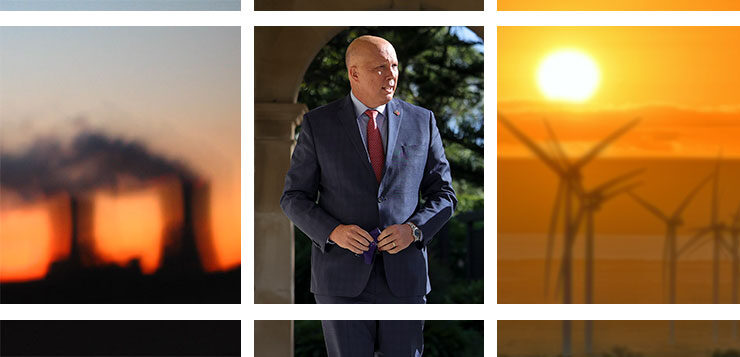Respected think-tank The Australia Institute (TAI) has weighed in on the Coalition’s exciting new policy adventure, known colloquially as ‘We were in government for almost a decade and did nothing, but now that we’re back in Opposition we’ve just realized nuclear power is a great way to help save the planet’. Those are our words, not theirs. And by ‘theirs’, we mean the Coalition, because it seems the TAI is definitely no fan of nuclear power.
In late March, deputy director of the TAI, Ebony Bennett, interviewed colleague Dr Matthew Ryan for the TAI’s regular podcast ‘Follow The Money’. The episode is called ‘The Coalition Goes Nuclear’. Nearly a half an hour in length, listeners are left in no doubt not just about the TAI’s views on nuclear energy, but also on people silly enough to support it.
Which brings us to Geoff Russell, New Matilda’s long-standing ‘all things science’ writer. As regular NM readers will know, Geoff has been a strong proponent of nuclear energy in this publication for more than a decade. He took some umbrage at not just how wildly misinformed the TAI podcast is, but how arrogantly it was all presented.
And so Geoff wrote the TAI an open letter… which they promptly ignored. We’re printing it here (edited and reworked for publication) so that readers can make up their own mind. We’ve also embedded the TAI podcast, so you can hear both sides of the story. It appears multiple times throughout this feature – each time, it’s queued up to start at specifically at the part of the podcast Geoff is analysing.
As otherwise unabashed fans of the TAI, we’ll pursue them separately for a response, and also maybe a debate down the track on the merits of nuclear power. But in the meantime, over to Geoff Russell….
May 2024
The Australia Institute
1 Franklin St
Griffith ACT 2603
Dear Ms Bennett and Dr Ryan,
I heard your podcast, “The Coalition goes nuclear” and feel you owe me an apology. You smeared me, and others who support nuclear energy, by implying we can’t have altruistic motivations, nor can we be in favour of urgent and effective action on the climate. Instead, you implied we must be stupid and/or climate change deniers.
You also owe your listeners an apology for being sloppy, unprofessional and failing to check basic facts. I’ll get to your mistakes in due course.
You aren’t the only people who give a damn
I’ve been advocating for strong climate action for about 20 years and have always been either an ALP, Greens, or more recently, Animal Justice Party voter, depending on context. But I don’t presume that all LNP voters are stupid nor that they all deny the reality and critical nature of anthropogenic climate change.
That would be inconsistent with TAI’s own polling; and everybody else’s!
By ignoring food, TAI has forfeited the climate high moral high ground
I’ve also been a vegan for close on 40 years and don’t regard The Australia Institute (TAI) as having much standing on climate change issues, because you don’t have an evidence-based climate and biodiversity-friendly food policy.
Quoting the most recent Intergovernmental Panel on Climate Change (IPCC) report, WG3 AR6 report, citing (Clark et al):
“…even if fossil fuel emissions were eliminated immediately, food system emissions alone would jeopardize the achievement of the 1.5 degrees C target and threaten the 2 degrees C target.”
Read that slowly and digest it fully; fixing our food system isn’t optional, it is absolutely essential. Dig a little deeper and you’ll see that the dietary shift required is almost entirely about reducing animal source foods.
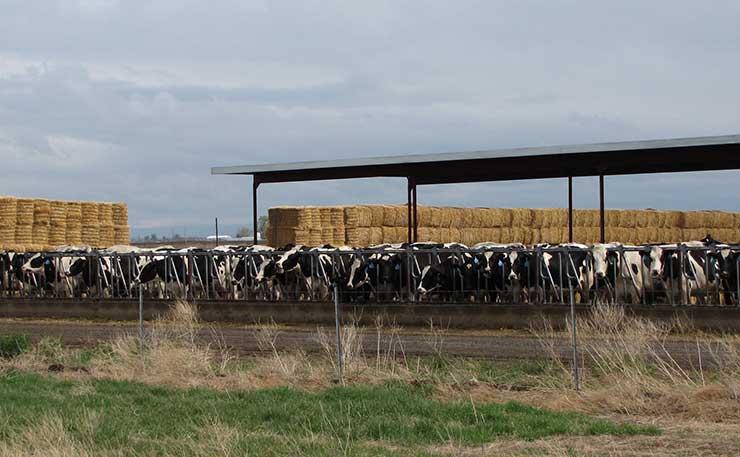
In a country with more cattle than people, livestock have long had a bigger climate impact (create more warming) than our fossil fuelled electricity system. The link in the preceding sentence is to an op-ed in The Age I wrote with a couple of distinguished Professors, one of Climate Change, in 2008.
The missing link in the Garnaut report
Animal agriculture is a serious climate issue, and TAI’s inaction is culpable. With so little standing on climate action and policy consistency, how dare you presume to smear all those in favour of nuclear power by impugning the sincerity of their climate change emergency beliefs.
Let me just expand on the meat industry impacts a little before detailing the more serious of your podcast’s factual faux pas.
Environmental impacts of meat are many
The livestock issue isn’t just about ruminants, but also about land-use for pig and chicken feed. In a typical year, chickens eat about 3.2 million tonnes of grain, which is far more than the 2.3 million tonnes that our human population of 26 million people consumes.
The total feed grain consumption by livestock is typically well over 13 million tonnes.
And animal agriculture isn’t just a climate issue, it’s also the biggest issue locally and globally in our biodiversity crisis, but again TAI is missing in action.
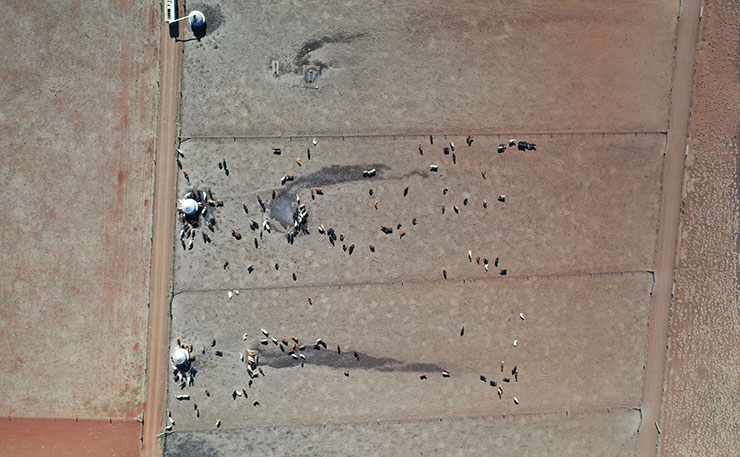
Can you fix the livestock impacts by feeding cattle additives? This may be possible in the 6% of cattle in feedlots but that won’t deal with either the vast majority on pasture. It also ignores the opportunity cost of not reforesting those pastures.
“Destock and reforest” should be a mantra heard as frequently as “divest from fossil fuels”.
Globally, we need to roll back about 200 years of deforestation to draw down carbon. NASA climate scientist James Hansen has been saying this for over 15 years. In Australia, that would include about 70 of the 100 million hectares cleared since white invasion.
Environmental scientists understand the nuclear footprint
Unsurprisingly, given the tiny biodiversity footprint of nuclear power, support for it by environmental scientists is strong. This open letter in 2014 was signed by a veritable who’s who of ecologists working in Australia. Read the names. There are some 58 Professors and assorted PhDs. Are they all climate change deniers also? They all deserve an apology.
Who is really responsible for our ongoing deep dependence on fossil fuels?
Think about what might have happened if that letter had prompted a lifting of the nuclear ban. The United Arab Emirates went from nothing to having its first reactor up and running in 10 years. So, had Australia begun a nuclear program when those scientists signed that letter, we’d either have, or be close to having, our first working reactor by now.
Having a nuclear program rolling would have enabled us to be getting rid of both gas and coal now with some confidence. As it is, it is reasonably clear that our Governments are getting engineering advice about the state of the grid that is telling them to make the backroom deals they have made to keep both coal and gas in play.
So TAI and everybody else that has blocked nuclear for the last two decades has been as culpable for our continued reliance on fossil fuels as anybody in the LNP.
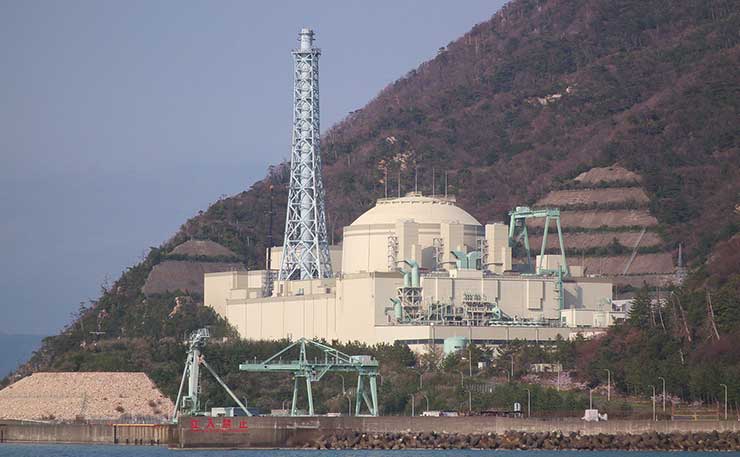
And yet you presume to tar everybody who is pro-nuclear with the brush of being weak on climate action! Had the world gone nuclear with France, not only would we be in a far stronger position regarding climate change, we’d have prevented even more premature deaths than the 1.8 million nuclear has prevented by displacing fossil fuel pollution.
In the decade after 2012 when Germany started phasing out its nuclear plants, about 9,000 Germans died from the subsequent increase in fossil fuel pollution. Make no mistake, the anti-nuclear movement has considerable blood on its hands.
My general view of TAI is that it does some terrific work on issues it perceives to be popular with its supporters. But on the big issues of animal agriculture and land use? It is just another bunch of environmental hypocrites who, like Tim Flannery, care genuinely about the climate, but not enough to change what they eat.
That’s why I have long preferred animal rights people over environmentalists; they walk the talk.
Deja vu
I went from a lifetime of being anti-nuclear to being pro-nuclear at the end of 2008. It seemed blindingly obvious, even then, and more so now, that renewables weren’t going to cut it. So I started to question my strongly held anti-nuclear beliefs, many of which I heard repeated on your podcast.
Listening to you both was a little like listening to myself 20 years ago. But before making claims, it pays to know some of the relevant science. So, let’s look at some of the actual issues you mentioned in between your ad-hominem attacks and your laughter and derision of “nuclear bros”.
There are six key areas and we’ll deal with each, one-by-one:
- Water
- Ramping reactors (up or down)
- Waste
- Building nuclear plants
- Ted O’Brien and ‘that’ nuclear report
- Small modular reactors

1. Water
THE SPIN: “You’ve got two options to cool a large nuclear facility, in terms of water getting through the plant. Either you build it in a coastal estuarine environment, or you’re going to have to run it off agricultural water, fresh water from rivers or from bores. The amounts of water are just enormous. We’re talking billions of litres of water. I was reading about one plant in Illinois that runs on nearly a trillion litres of water a year. Ask a farmer how much water that is?”
– Dr Matthew Ryan, The Coalition Goes Nuclear, The Australia Institute’s ‘Follow The Money’ podcast, March 27, 2024.
Nuclear power plants are “thermal” power plants. What does this mean? It means they work by heating water to make steam to drive generators.
Back in about 2011, Beyond Zero Emissions (BZE) advocated that Australia decarbonise with a fleet of solar thermal power plants. These also work by heating water to make steam, but they do it by focusing sunlight with mirrors. So BZE was advocating thermal power plants, with the same cooling requirements as coal, gas or nuclear.
In all such power plants, the water is used to cool the turbine, not the reactor or the mirrors. In a nuclear plant, the loop carrying hot water (or steam) from the reactor to the turbine is closed. There is no water lost from that loop. So nuclear plants don’t need any extra water by virtue of being nuclear.
We have plenty of 300-600 megawatt (MW) coal plants, each would use almost exactly the same amount of water as a 300-600 MW nuclear (or solar) thermal plant. There are tiny differences, but nothing of any consequence. So if we can find the water for our coal plants, we can find it for a similar capacity of nuclear plants.
The BZE plan for solar thermal plants specified air cooling. That’s fine. You can use that on any thermal power plant. But you take a significant efficiency hit. Water works much better than air, especially when it’s hot. But how much water are we actually talking about?
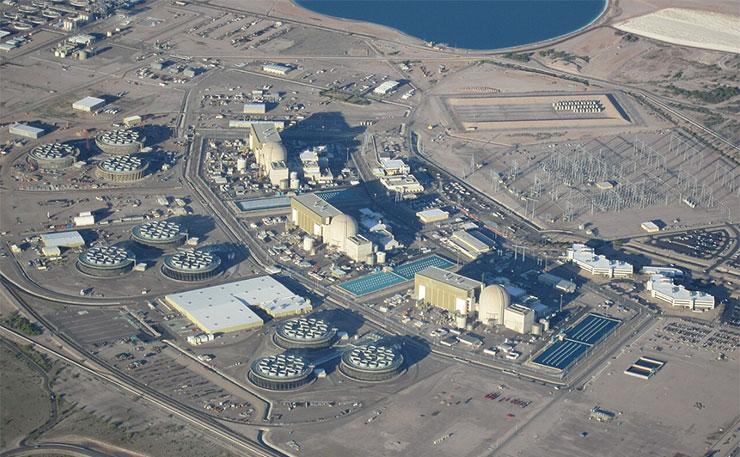
There is a very large nuclear plant in the desert in Arizona featuring three 1,400 megawatt reactors. Matthew seems confused about nuclear reactors and nuclear plants. People typically refer to all the reactors on one site connected by a single grid as a plant, but a nuclear plant often has multiple reactors. Hinkley Point C in the United Kingdom, for example, is one plant with two reactors.
I’ve no idea how Matthew missed this. You can see it on Google earth. It’s clearly listed on Wikipedia. This plant in Arizona has three large reactors. By large, I mean their electrical power is large, not the plants themselves. The main pressure vessel in these reactors is about 14m high and 5m wide – similar to the size of the Lucas Heights reactor – but loaded with a lot more fuel!
How do they keep those three reactors cool? They use treated sewage! How is that possible? Regardless of where the water comes from, most is just returned to its source, minus evaporative losses.
You can check Australia’s Water Account… Table 2. Our coal and gas plants extract about 50 trillion litres and return about 49.8 trillion back to where they came from. You only lose what is actually evaporated. So the net usage is about 200 billion litres.
How much water would it take to produce enough hydrogen to replace our Liquified Natural Gas (LNG) exports? Work it out, it’s not complicated. By my calculations it’s very similar to the 200 billion litres of evaporated losses due to coal.
A study by Deakin University framed it differently: they looked at the amount of water needed for a $50 billion green hydrogen industry, and estimated 225 billion litres. $50 billion was the value of our LNG exports in 2019. It was much higher in 2023.
Just for context, we use about 10 trillion litres in the agriculture, forestry and fishing sector, with dairy pastures typically being the biggest user. The big difference between water for cooling or agriculture and water for hydrogen, is that water for hydrogen has to be super pure (otherwise it buggers the electrolyzers). So you need a considerable amount of energy for purification.
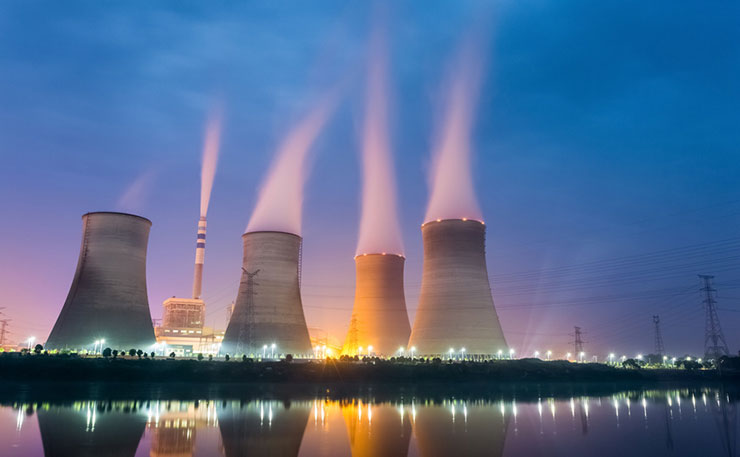
2. Ramping reactors (up or down).
THE SPIN: “[Nuclear reactors] work really poorly for the use the Coalition is intending to put them too. The argument coming from Peter Dutton is that we need nuclear to firm up renewables. The problem is, to firm up renewables you need something that can put an output out straight away, and ramp down really easily. If you try and ramp down a nuclear power plant, you end up with a Chernobyl-type situation. [laughter from host]”
– Dr Matthew Ryan, The Coalition Goes Nuclear, The Australia Institute’s ‘Follow The Money’ podcast, March 27, 2024.
Reactors can ramp up or down and do so without any adverse consequences. How do you think you turn them off to refuel?
It certainly pays to run reactors at full power as much as possible because the marginal cost of that electricity is tiny. But while reactors installed in the 1960s weren’t designed to ramp efficiently or automatically, anything in the last 40-odd years has no problem ramping.
For example, in France, they typically run most of their fleet in constant power mode but select a few to ramp up and down to follow the load.
Nuclear reactors can’t ramp as fast as a gas turbine, so most nuclear grids still use some gas generators to handle steep ramping requirements. Ramp rates are always given in reactor specification sheets. For example, you can check the specs of the Korean APR1400 reactor here: see section 2.6.
It can ramp up or down by about 5% per minute. 5% of 1400MW is 70MW per minute – that’s a pretty big chunk of power. They can also do step changes of 140MW, and they can also just follow load automatically provided it doesn’t exceed 3-5 percent.
If you really want a nuclear reactor to ramp faster than gas, you could stick a thermal battery in the loop. Storing heat is much cheaper than storing electricity and lasts much longer. It can be used to ramp very quickly.
The Canadian CANDU reactors also deserve a mention; they are smaller than big reactors like the APR1400 and could be a good fit for the Australian grid. They are normally load following, between about 60% and 100% of full power. I could go on with many more specs.
I’ve no idea where you got the idea that ramping caused the Chernobyl accident, but rumours about nuclear power spread very easily in a community plagued by confirmation bias and without any of the technical background or incentive needed to check claims.
The ramping story is probably similar to the meme about water. Even the most basic knowledge of thermodynamics is missing in many who have been thrusting themselves into the energy debate over the past decade or so.
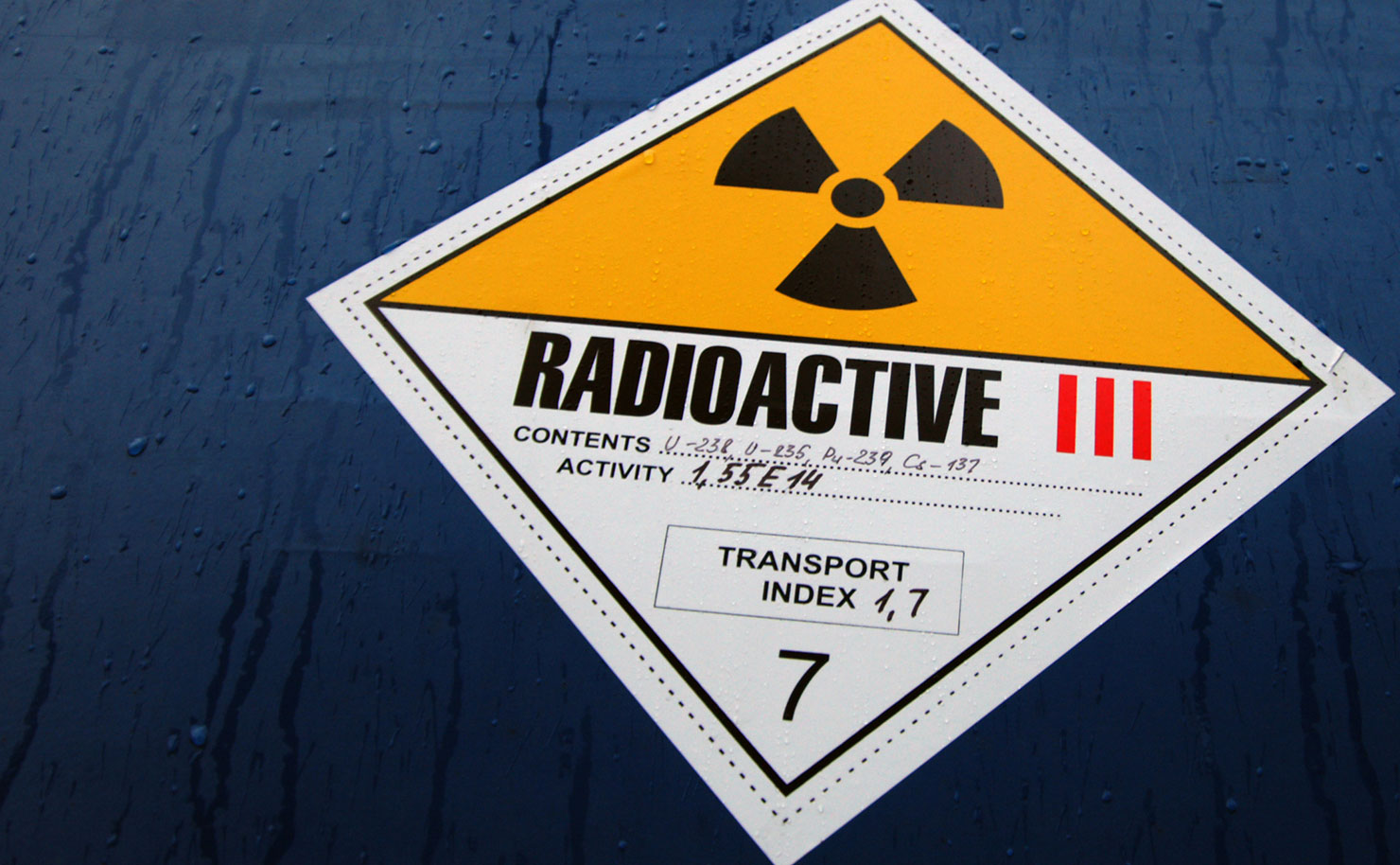
3. Nuclear Waste
THE SPIN: “We saw huge community pushback in South Australia to the idea of a nuclear waste dump. I guess I kind of find it a bit laughable that the coalition is really pushing this at the same time as they’re like, Oh no, but there’s huge community backlash against wind, like the idea that six conventional nuclear reactors would be welcome with open arms by the community when we’re struggling with renewable energy projects, just seems a bit laughable to me.”
– Dr Matthew Ryan, The Coalition Goes Nuclear, The Australia Institute’s ‘Follow The Money’ podcast, March 27, 2024.
Here I need to explain some very elementary physics. There are three kinds of radiation; alpha, beta and gamma. The first two are irrelevant.
Why? Alpha radiation can’t penetrate your skin, so you can handle things like uranium and plutonium without any concerns. A young Queen Elizabeth was given a lump of plutonium to handle when she opened a plutonium production facility in 1956… and invited to feel its natural warmth. People usually wear gloves, but that’s to avoid dust, not radiation.
Beta radiation can penetrate skin by a cm or two, depending on its energy level, but is easily shielded… gloves or a paper bag will do it.
When people claim that nuclear waste is dangerous for 100,000 years, they are talking about the irrelevant radiation. For almost all of that 100,000 years, the only way nuclear waste can hurt you is if you dig it up, pulverise it and then snort it or swallow it.
Plenty of perfectly natural things you might like to dig up out of the ground are dangerous in that same sense. So those claims are rubbish and belong in the massive bin of very bad anti-nuclear arguments.
But then there’s gamma radiation. Once the gamma radiation has declined, which happens exponentially, then nuclear waste is safer than many things you can buy at Bunnings … like “pool acid” (hydrochloric acid). Meaning that nuclear waste, minus gammas, is only dangerous if, as I said above, you manage to swallow or snort it (which is made pretty hard by the way it is packaged).
As we just said, but it’s worth repeating, the amount of gamma radiation from high level nuclear waste declines exponentially. This is unlike plenty of other dangerous materials we produce and dispose of on a regular basis.
Many utility scale solar panels contain cadmium; that stays toxic and carcinogenic forever. That doesn’t make solar waste an insoluble problem, but it’s a much harder problem than nuclear waste.
So how long do you need to wait before the gamma radiation has declined to handle-able levels? Depending on the exact nature of the material and reactor type… about 400-500 years. Climate scientists have no trouble at all finding areas which have been undisturbed for millions of year. I’ve been in castles in Switzerland that have stood for a thousand years, despite being attacked! By contrast, burying something to stay buried for a few hundred is pretty simple; Engineering+Geology 101.
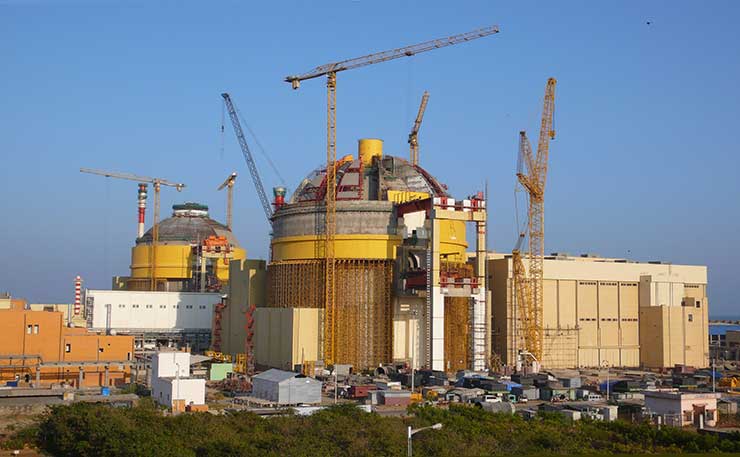
4. Building nuclear plants
THE SPIN: This is really crystal ball stuff… when you talk to different experts, they give you different numbers. Whether it’s 10, 15, 20, most reliable experts are saying it’s incredibly unlikely there will be any nuclear power, even if we had full bi-partisan support behind it, before the 2040s.
– Dr Matthew Ryan, The Coalition Goes Nuclear, The Australia Institute’s ‘Follow The Money’ podcast, March 27, 2024.
Most of a nuclear plant isn’t nuclear! It’s just the same kind of stuff you’d have in any thermal power plant; stuff like turbines and generators. It’s mostly plumbing to handle steam and water.
The Japanese built 60 reactors at a median build time of under four years each. You can check this on the WNA reactor database.
The Chinese are building reactors in about 5.5 years. Perhaps the US build problems have far more to do with them prioritising lawyers over engineers for a few decades. The result is make-work schemes and the formulation of thousands of pages of regulations, amid a shortage of people who can weld or rig rebar.
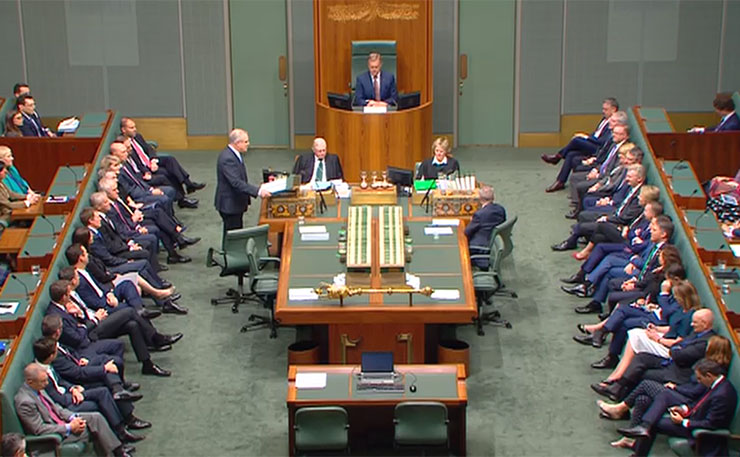
5. Ted O’Brien and that nuclear report
THE SPIN: Angus Taylor commissioned a review into nuclear, which was led by Ted O’Brien [host laughs], the current spokesperson for nuclear for the Coalition. And it recommended not pursuing it, unless there was overwhelming community support for it.
– Dr Matthew Ryan, The Coalition Goes Nuclear, The Australia Institute’s ‘Follow The Money’ podcast, March 27, 2024.
I’m really annoyed that the Liberal Party didn’t remove the ban on nuclear power, but your claim that “Ted O’Brien’s” nuclear report recommended not pursuing nuclear power without overwhelming community support would be funny if it were true; it isn’t.
Recommendation 3 from that report recommended lifting the ban on nuclear energy in relation to Generation III+ and IV, including small modular reactors. Why didn’t the Morrison Government do that? Who knows. But it’s obviously not Ted O’Brien’s fault.
HoR Environment and Energy_nuclear tech in Aus report_December 2019Item c of that recommendation required that no reactor or waste facility would be established without the prior, informed consent of local impacted communities. What kind of politician would recommend otherwise?
Keep in mind that this wasn’t ‘O’Brien’s report’, it was a committee with various representation, including a dissenting report from Zali Steggall, the Independent for Warringah who knocked Tony Abbott out of parliament. But even if O’Brien’s report had called for “overwhelming” general community support, what makes you think such support is laughable?
More Australians already support nuclear power than oppose it. The ratio of for and against is roughly 2 to 1. There are at least 4 recent local polls showing not only that the public supports it, but that even some 40% of Greens voters either support nuclear, or at least support lifting the ban.
- 2021. Polling company, Dyndata. 53% in favour of nuclear and 23% opposed. 45% of Green voters in favour, but the sample size of this subgroup would have been quite small.
- 2022. Polling company, True North Strategies. 55% in favour, but a smallish sample of only 500 people.
- 2023. Polling company, Insightfully. This poll had a sample of 2600, which is enough to yield more reliable results about subgroups. 45% in favour, 23% opposed. 41% of Greens voters favoured lifting the ban on nuclear energy.
- 2024. Polling company, Lowy Institute 61% in favour, with a sample size of 2028. 48% of Greens support nuclear.
TAI is a polling organisation. So you should understand that anybody with an ounce of political nouse doesn’t do their own polling, except TAI. Sensible organisations contract somebody else to do it, and that somebody will vet the questions to ensure a lack of “push polling”. Vetting is never perfect, but anybody wanting to argue that all four of the above polls are rubbish would be in for a bit of a shock at the ballot box.
I’d guess that Peter Dutton has clearly looked at the polls and knows he’s on a winner. The left is busy consulting its echo chamber and finding frantic agreement and wondering what he’s on about. If Albanese had his eyes on the numbers he’d be lifting the ban to steal a march on Dutton and neutralise the issue. But he’s dug himself into a corner through profound ignorance and the various luddite groups within the ALP (and the Greens). He’s probably also worried about water, ramping and waste.
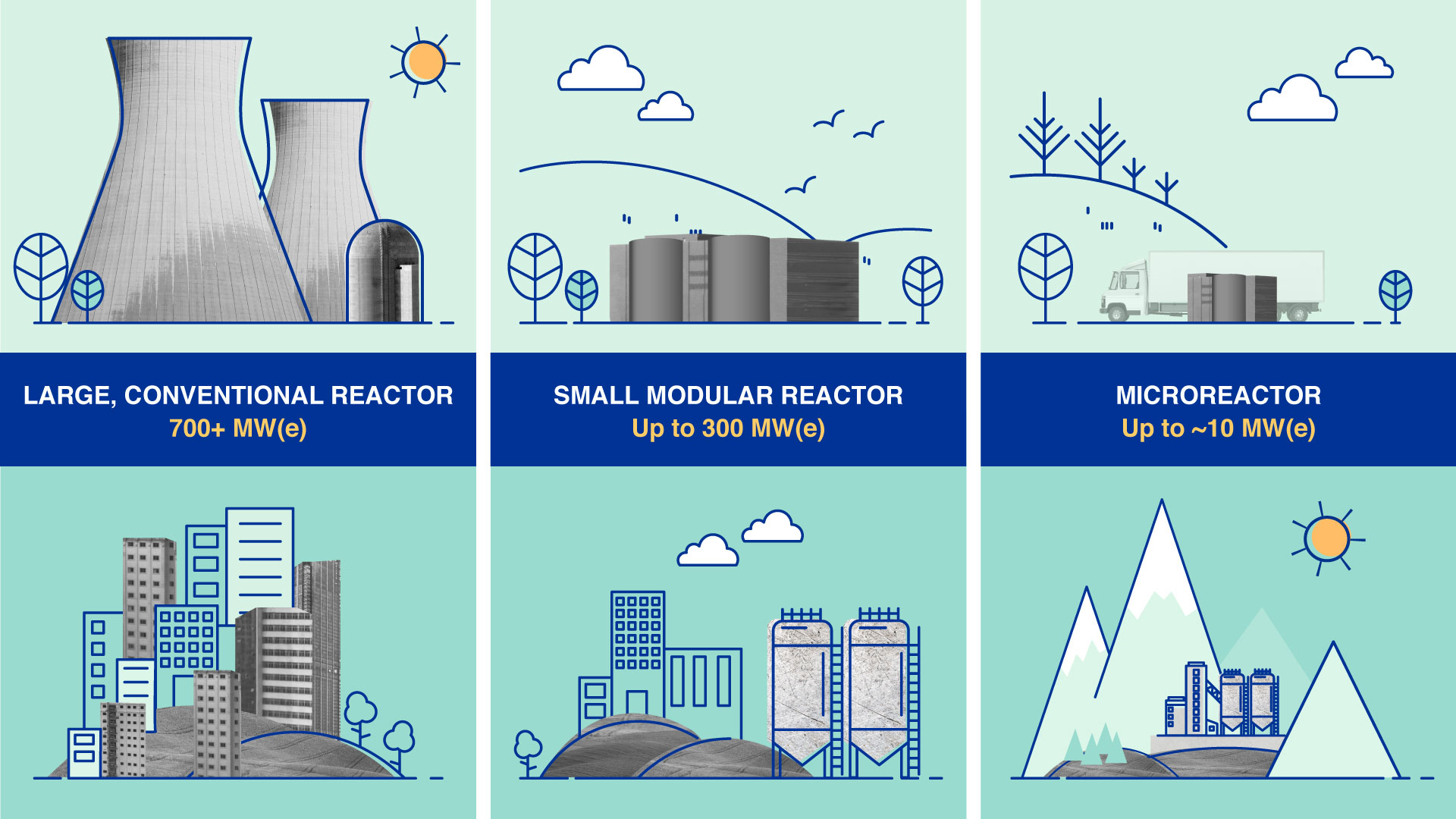
6. Small modular reactors.
THE SPIN: … It’s pretty wild that we’re talking about a technology that doesn’t exist, as though it’s ready to go. There were three SMR projects around the world until very recently, except one of them has now collapsed because of cost overruns. That one was in the US, so now that the only options that are out there is one in China and one in Russia. So very, very opaque processes, we have no real idea how that development is going or the costs involved, how ready those technologies would be to be deployed in Australia.
– Dr Matthew Ryan, The Coalition Goes Nuclear, The Australia Institute’s ‘Follow The Money’ podcast, March 27, 2024.
Small modular reactors are normally called submarines, icebreakers, or perhaps aircraft carriers. They have been around, at scale, for decades. But the military SMRs use highly enriched uranium. Why? They want the reactor to last for the life of the submarine, without refuelling.
Such fuel isn’t cheap or readily available. The US is currently expanding its ability to produce HALEU… uranium enriched up to 20%. This is used in some Russian icebreakers. The latter have had small modular reactors for decades. But, given the availability of such fuels, I’d say that reactors running on bog standard fuel will more than likely dominate for the next decade or so.
One such reactor is the BWRX-300; one of the many things you missed in your podcast. The Canadians have already started building the first of four at Darlington. It’s expected to be operational by 2028. This reactor is a scaled down version of a very common reactor.
Many nuclear advocates get annoyed at so much attention being given to new reactor designs. I admit that when I first looked at nuclear, I was similarly enamoured of the new fancy designs. But once you realise how spectacularly safe and efficient older reactors have been, the BWRX-300 (with a few sensible design upgrades) looks like a pretty good bet.
For their part, the Chinese aren’t betting on anything, they’re building everything.
One or more of the newer designs may well end up being successful. It’s very easy to be biased towards a view that new designs must be better than old ones, until you remember that they put people on the moon in 1969 and invented most of modern physics well before then. So if you are having trouble understanding and using Laplace transforms to solve differential equations, it might humble you to know they’ve been around for 200 years.
Did you get this far?
I’ve spent a day or so on this letter in the hope that you read it. I’ve tried to be less arrogant and rude than your podcast, but maybe I’ve failed. You can judge.
My journey from anti-nuclear to pro-nuclear wasn’t overnight, but it started by finding out that a few of my cherished factoids were wrong. It’s like a house of cards. Once you realise the base is flimsy, the whole tower eventually comes crashing down.
I was anti-nuclear for decades. Once I started fact-checking, I soon realised that almost everybody on the anti-nuclear side, such as yourselves, simply don’t know much at all about energy, engineering, or anything else that is relevant.
Sincerely,
Geoff Russell
P.S. There are two reactors at Hinkley Point C … one plant, two reactors. Here’s a little map showing the area you’d need to cover with solar farms to generate the same annual amount of electricity as HPC. HPC is just to the left of the blue and white marker. The British don’t have much in the way of wilderness, but I’d personally hate to trash that much farm land and hedgerows with panels that do nothing for most of every day anyway (the UK, on average, receives about 2.5 to 3.5 peak sun hours per day, depending on the specific location and time of year!). And believe it or not, the Poms really are trashing good land with solar farms.
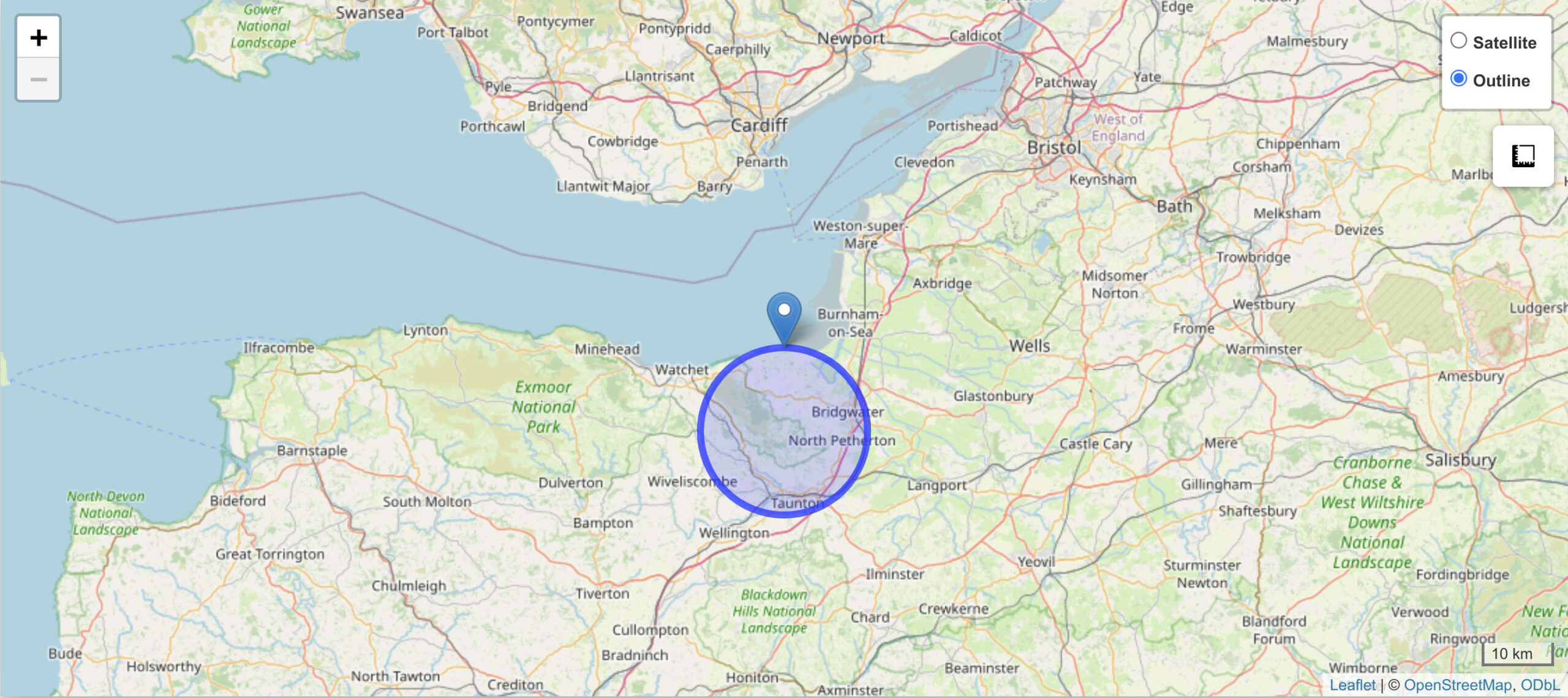
Donate To New Matilda
New Matilda is a small, independent media outlet. We survive through reader contributions, and never losing a lawsuit. If you got something from this article, giving something back helps us to continue speaking truth to power. Every little bit counts.

